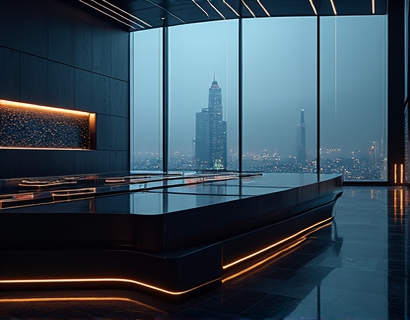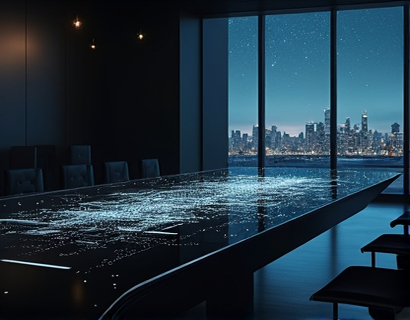Augmented Reality Innovations: Expert Analysis and Industry Trends Unveiled
In recent years, augmented reality (AR) has emerged as a transformative technology, reshaping various industries and revolutionizing the way we interact with digital information. As AR continues to evolve, staying informed about the latest advancements and industry trends is crucial for professionals and enthusiasts alike. This article delves into expert analysis and emerging trends in AR, providing a comprehensive resource for those looking to deepen their understanding and stay ahead in this rapidly advancing field.
The AR landscape is characterized by rapid innovation and significant investments from both tech giants and startups. Companies like Apple, Google, and Microsoft are investing heavily in AR research and development, while numerous startups are pushing the boundaries of what AR can achieve. This environment of intense competition and collaboration drives continuous improvements in AR technology, making it an exciting time to explore the possibilities of augmented reality.
Current State of AR Technology
Today's AR technology encompasses a wide range of applications, from consumer-facing experiences on smartphones and smart glasses to industrial solutions that enhance productivity and efficiency. One of the most notable advancements is the improvement in AR hardware, particularly in the areas of display technology and sensor accuracy. Modern AR devices boast higher resolution displays, wider field of view, and more precise tracking capabilities, which significantly enhance the user experience.
On the software side, AR development platforms have become more accessible and powerful. Tools like Unity and ARKit/ARCore provide developers with robust frameworks to create immersive AR experiences. These platforms support a variety of features such as spatial mapping, light estimation, and object recognition, enabling developers to build more realistic and interactive AR applications.
Industry Applications of AR
AR's versatility makes it applicable across numerous industries, each leveraging the technology in unique ways. In healthcare, AR is used for medical training, surgical assistance, and patient education. Surgeons can use AR to visualize patient data in real-time during procedures, improving precision and outcomes. Medical students can practice complex surgeries on virtual patients, enhancing their skills without the risks associated with real-life procedures.
In the manufacturing and maintenance sectors, AR is transforming how technicians interact with complex machinery. AR glasses can overlay step-by-step repair instructions, diagrams, and real-time data, reducing downtime and errors. This not only increases efficiency but also ensures that technicians have access to the most up-to-date information.
The retail industry has also embraced AR, offering customers immersive shopping experiences. Virtual try-on features allow users to see how clothes, makeup, or furniture would look in their environment before making a purchase. This not only enhances customer satisfaction but also reduces return rates for retailers.
Emerging Trends in AR
As AR technology advances, several emerging trends are shaping the future of the industry. One of the most significant trends is the integration of AR with other technologies such as artificial intelligence (AI) and the Internet of Things (IoT). AI enhances AR experiences by enabling more intelligent and context-aware applications. For example, AI can analyze user behavior and preferences to provide personalized content, making AR experiences more engaging and relevant.
Another trend is the rise of AR in education. AR is being used to create interactive and engaging learning materials that cater to different learning styles. Virtual labs, 3D models, and interactive simulations make complex concepts easier to understand, fostering a deeper understanding of the subject matter. This trend is particularly impactful in STEM education, where hands-on learning is crucial.
Social AR is also gaining traction, with platforms like Snapchat and Instagram integrating AR filters and effects that users can share and interact with in real-time. This social aspect of AR is driving user adoption and creating new opportunities for content creators and marketers. As AR becomes more social, we can expect to see more innovative ways in which people connect and share experiences through augmented reality.
Challenges and Considerations
Despite the numerous benefits, the AR industry faces several challenges that need to be addressed. One of the primary concerns is user adoption. For AR to reach its full potential, it must become more mainstream and user-friendly. This requires ongoing improvements in hardware design, user interface, and content creation tools. Developers and manufacturers must focus on creating AR experiences that are intuitive, seamless, and valuable to the average user.
Privacy and security are also critical issues in AR. As AR devices collect and process sensitive data, ensuring the protection of user information is paramount. Developers must implement robust security measures and comply with data protection regulations to build trust and confidence among users.
Another challenge is the need for standardization in the AR industry. With multiple platforms and devices, there is a lack of consistency in AR experiences. Establishing industry standards for AR content, development tools, and hardware specifications can help create a more unified and interoperable ecosystem, benefiting both developers and users.
Future Outlook
Looking ahead, the AR market is poised for significant growth, driven by technological advancements and increasing adoption across various sectors. Predictions suggest that the global AR market will reach billions of dollars in the coming years, with applications expanding into new areas such as entertainment, education, and smart cities.
One of the most exciting developments on the horizon is the advent of mixed reality (MR), which combines elements of AR and virtual reality (VR) to create even more immersive experiences. MR has the potential to blur the lines between the physical and digital worlds, opening up new possibilities for interaction and engagement.
Another area of focus is the development of AR on the edge, where processing power is moved closer to the user to reduce latency and improve performance. This is particularly important for real-time AR applications that require immediate feedback and high precision.
As AR continues to evolve, it will become increasingly integrated into our daily lives, transforming how we work, learn, and entertain ourselves. Staying informed about these developments and trends is essential for anyone looking to leverage AR's potential in their professional or personal life.
In conclusion, the AR industry is at a pivotal moment, with rapid advancements and innovative applications reshaping multiple sectors. By understanding the current state of AR technology, the industry applications, emerging trends, and future outlook, professionals and enthusiasts can better navigate this exciting landscape. Embracing the opportunities presented by augmented reality will undoubtedly lead to new insights, efficiencies, and innovations.











































